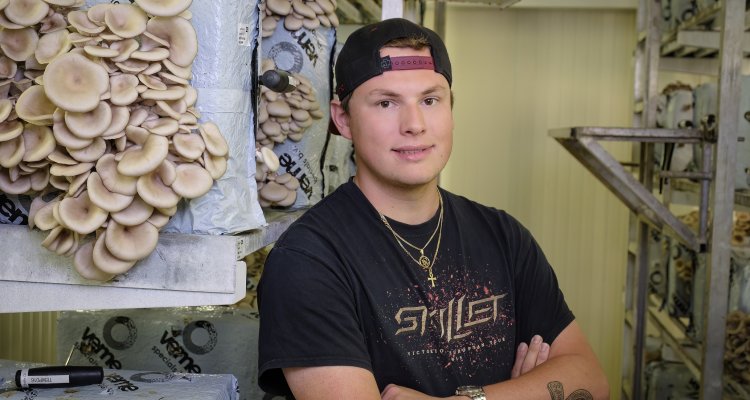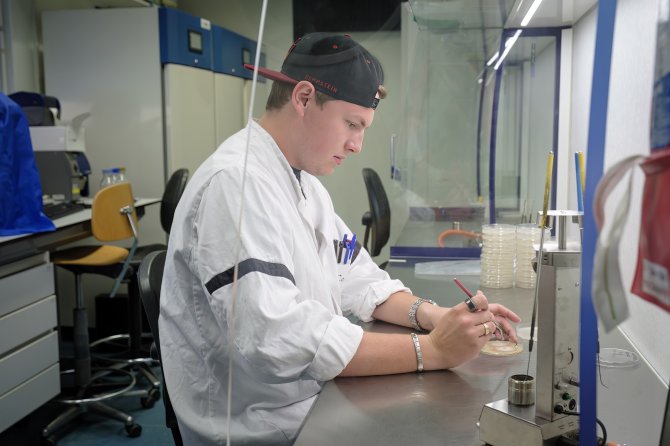
Interview
Mushroom analyst Corné Vermeer: “I love making the puzzle pieces fit”
Wageningen University & Research has a huge collection of mushroom-forming fungi. More than 10,000 different species and varieties are safely stored in liquid nitrogen. It’s up to Corné Vermeer to look after and expand the collection. He’ll be following in the footsteps of José Kuenen, who has done the job for more than 35 years.
Up until a year and a half ago, Corné worked as an analyst in potato research at the Wageningen Campus. One day he was asked if he might be interested in transferring to the mushroom research unit at Wageningen Plant Research: “I was certainly open to the idea. My father was an inspector at a mushroom processing company, and I had a temporary job there once. I became fairly skilled at assessing mushrooms. They’re fascinating organisms, and the growth process can vary tremendously across different species and varieties.”
“The hand-over period was really crucial”
Corné is well aware that it takes time to get to grips with that process. That’s why he’s spent the past year and a half being thoroughly trained by José: “You really need to have a feel for what you’re doing, even when it’s just preparing the spawn (the material that holds the mycelium of the type of mushroom you want) for inoculating the substrate that mushrooms grow on. It takes a year just to get to grips with that. So the hand-over period was really crucial. I’m pretty confident now at preparing the spawn, but there have been times that it turned into a giant lump that I couldn’t do anything with, because I’d waited for just a tiny bit too long.”

Turning grass and straw into insect food
Corné is now testing to see whether fungi can convert biomass streams such as grass and straw into food for insects, which in turn can then serve as a source of food for both humans and animals. “The idea is that this would capture waste streams that would otherwise be left to rot. We’re doing tests with a variety of mushroom species and cultivating them under a variety of different conditions. It’s fascinating to see what happens. Sometimes a dish containing mycelium will suddenly erupt with mushrooms after three weeks, when you’d already given up on it. And then another sample delivers almost nothing, when that was the one you were expecting much more from. So you live and learn.”
I like exact work like this: puzzling until it's right. Fortunately, it rarely happens that the puzzle cannot be put together.
Not a hobby
Corné has found himself being caught up in the enthusiasm of his fellow mushroom researchers, but unlike some of them, he doesn’t expect his job to turn into a hobby: “I have colleagues who spend their weekends in the woods, looking for mushrooms. I’m not about to start doing that. I prefer to spend my free time playing sports or going to concerts.”
Plugging away until every piece of the puzzle fits
For the time being, Corné still has José around to share her expertise. But she's retiring soon, and then he'll be on his own. “I’ve already taken over most of her responsibilities. I now want to focus on really getting to grips with the job. I like exact work like this: puzzling until it's right. Fortunately, it rarely happens that the puzzle cannot be put together.”